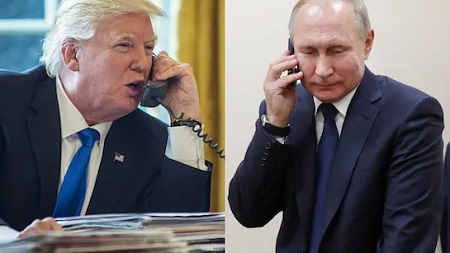Vladimir Putin ordered a series of nuclear missile tests and large-scale military drills on Thursday, only a day after U.S. President Donald Trump abruptly cancelled a planned peace summit between the two leaders. The Russian president claimed the exercises had been “planned in advance,” but the timing underscored mounting tensions between Washington and Moscow following a new round of U.S. sanctions on Russia’s energy sector.
The White House announced on Wednesday sweeping measures targeting Rosneft and Lukoil, two of Russia’s largest oil companies, in an effort to “degrade the Kremlin’s ability to finance its war machine.” The sanctions, coupled with a European Union ban on Russian liquefied natural gas imports, represent one of the most significant Western economic offensives since the invasion of Ukraine began in 2022.
“These are tremendous sanctions,” Mr. Trump told reporters from the Oval Office. “They’re very big ones against their two biggest oil companies. We hope the war will be settled soon.”
The U.S. president added that the penalties were designed to push Mr. Putin back to the negotiating table. “Hopefully he’ll become reasonable, and hopefully Zelensky will be reasonable,” he said. “It takes two to tango.”
Energy Sanctions and Economic Ripples
Although analysts say the immediate impact on Russia’s economy may be limited, oil prices jumped by more than two percent following the announcement. Washington also warned of potential “secondary sanctions” against foreign buyers of Russian oil, raising fears of global market disruptions.
NATO Secretary-General Mark Rutte described the move as part of a coordinated Western effort to “change the Kremlin’s calculus.”
Yvette Cooper, the U.K. Foreign Secretary, praised the measures. “We must choke off the oil and gas revenues helping to fuel Putin’s illegal war,” she said.
Trump-Putin Summit Scrapped
Plans for a highly anticipated Trump-Putin summit in Hungary were scrapped earlier this week after Moscow refused to accept U.S. terms for a ceasefire along current front lines in Ukraine. “Every time I speak with Vladimir, we have good conversations, but they go nowhere,” Mr. Trump admitted. “It’s time to make a deal. A lot of people are dying.”
Hours after the cancellation, Russia launched more than 400 missiles and drones across Ukraine, killing at least seven civilians, including two children. The strikes were followed by the test-firing of a Yars intercontinental ballistic missile from the Plesetsk launch site in northwestern Russia and a Sineva ICBM from a submarine in the Barents Sea. Strategic bombers also participated, launching long-range cruise missiles.
While the Kremlin described the drills as “routine,” they coincided with escalating rhetoric between the two nations. Mr. Trump has previously called the threat of nuclear war “the greatest danger facing humanity.”
Tensions Mount Over Ukraine Aid
Meanwhile, Mr. Trump defended his decision not to provide Ukraine with U.S.-made Tomahawk missiles, arguing that training Ukrainian forces on the system would take “at least six months, maybe a year.” The president said he did not want to “drain U.S. stockpiles” or escalate the conflict.
His reversal came just days after reports suggested Washington was considering expanding Ukraine’s access to long-range Western weaponry. Mr. Trump dismissed those reports as “fake news.”
The sanctions on Rosneft and Lukoil freeze any U.S.-based assets and threaten penalties for foreign banks that continue dealing with them. Analysts warn that if secondary sanctions are imposed on countries like India and China—the main buyers of Russian crude—it could drive up global oil prices and spark economic blowback in the West.
Read Also:
Scottish, UK govts clash over £20m security bill for Trump, Vance visits
Kremlin proposes ‘Putin–Trump unity tunnel’ to link Russia, United States
Craig Kennedy, a Russian energy expert at Harvard’s Davis Center, said the outcome depends on enforcement. “It’s not going to be seismic. It’s incremental,” he said. “If Washington starts calling New Delhi and Beijing telling them to stop buying Russian oil, then things could get messy fast.”
The Hungary summit had been intended to relaunch peace efforts based on a European-drafted 12-point plan. However, talks fell apart after a tense exchange between U.S. and Russian diplomats, Marco Rubio and Sergei Lavrov, over territorial concessions and arms deliveries.
Ukraine’s President Volodymyr Zelensky accused Russia of using “stalling tactics” while continuing its assault. On Wednesday, Ukrainian forces struck a Russian chemical plant in Bryansk using British-made Storm Shadow missiles. Moscow condemned the attack as an escalation.
Russia’s full-scale invasion of Ukraine began in February 2022. The Kremlin currently occupies about 20 percent of Ukrainian territory, including Crimea, annexed in 2014.
Despite growing diplomatic friction, both Washington and Moscow maintain that negotiations remain the “only path to a lasting peace.”
For now, however, the world watches as nuclear-capable missiles light up the northern skies—another reminder that the war in Ukraine is far from over.



